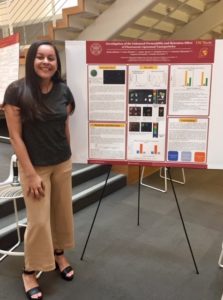Major and Classification
Biomedical Engineering
Faculty Mentor
Cristina Zavaleta
Department
Biomedical Engineering
Research Gateway Project
“An Investigation of the Enhanced Permeability and Retention Effect using Fluorescent Liposomal Nanoparticles”
Project Abstract
There is presently a shortage of methods to accurately identify tumor margins which contributes to the 37% mortality rate of the 1.5 million new cases of cancer reported each year. The instance of cancerous cells present on edges of removed tumors (positive margins) is extremely detrimental to a patient’s outcome and impacts local recurrence. We are developing a
new imaging strategy to help guide surgeons in the operating room that uses fluorescent liposomal contrast agents. These nanoparticles (NPs) have the ability to passively accumulate in solid tumors due to the enhanced permeability and retention effect (EPR). Surgeons can exploit
the EPR effect to accurately locate cancer in real-time and decrease positive margin rates. However, their use in vivo in relation to the EPR effect still needs to be investigated. One variable that can enhance liposomal accumulation at tumor sites is the optimization of the size of
nanoparticles. This project considers two sizes of nanoparticles (100 nm and 400 nm) to determine which size can best accumulate in tumors while preserving the intensity of the fluorescent dye the liposome encompasses. Both sizes of fluorescent liposomes accumulated in greater quantities in tumors than healthy adjacent tissue. We observed 4.5 times more fluorescent signal in tumors of mice that had been IV injected with 100 nm NPs compared to those administered 400 nm NPs. The commercially available fluorescent dye’s properties in conjunction with liposomal ability to passively accumulate in tumors prove that these nanoparticles can aid in visualizing tumor margins in the operating room.
